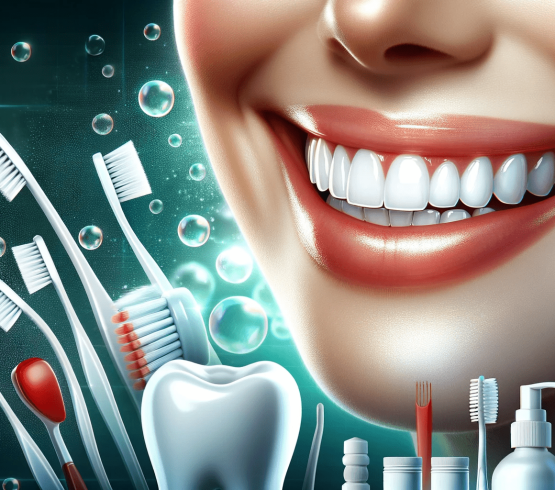Oral health is a crucial component of overall well-being, influencing not just our digestion but our confidence and social interactions as well. A radiant smile can open doors, foster connections, and boost self-esteem, making it more than worth the effort. While brushing stands as the pillar of dental hygiene, there’s a world of at-home techniques that can elevate your oral care routine, ensuring your smile is as healthy and bright as it can be.
Traditional Brushing Techniques
Brushing your teeth is something we’ve all been taught since childhood, yet many of us might not be doing it correctly. The American Dental Association (ADA) recommends brushing twice a day for two minutes with fluoride toothpaste. Proper brushing involves gentle circular motions to clean the teeth and gums effectively, reaching the back of the mouth and the insides of the teeth where plaque often hides.
Beyond Brushing
While brushing is indispensable, it’s not the sole technique for achieving optimal oral health. Here are some additional methods to consider incorporating into your daily routine:
Flossing
Flossing removes food particles and plaque between your teeth, areas where a toothbrush can’t always reach. Regular flossing helps prevent gum disease and tooth decay, making it a critical step in your oral health regime.
Using Mouthwash
Mouthwash isn’t just for freshening breath; it can also help prevent cavities and reduce plaque. Look for a therapeutic mouthwash with antimicrobial properties and fluoride to protect against tooth decay.
Tongue Scraping
The tongue harbors bacteria and food particles that can contribute to bad breath and dental issues. Tongue scraping, using a special scraper or your toothbrush, can help remove this build-up, improving your oral health and breath.
Oil Pulling
Originating from Ayurvedic practices, oil pulling involves swishing oil, typically coconut, sesame, or sunflower oil, around your mouth for 15-20 minutes to “pull” bacteria from your teeth and gums. It’s touted for reducing plaque and improving gum health.
At-Home Tools and Devices
Advancements in dental technology have brought professional-grade tools into our homes.You can also try laser teeth whitening at home. Here are a few you might consider adding to your arsenal:
- Water Flossers
An excellent alternative to traditional floss, especially for those with braces or other dental devices.
- Electric Toothbrushes
Known for removing more plaque than manual brushing and making it easier to brush properly.
- Interdental Brushes
Small brushes designed to clean between your teeth, offering another option for those who find flossing challenging.
Tips for Parents
- Start oral hygiene early
As soon as your child develops teeth, begin gently brushing them with water and a soft-bristled toothbrush. This helps establish good habits and gets them used to the sensation of brushing.
- Make it fun
Brushing can be a chore for children, so make it more enjoyable by playing their favorite song or using a fun-shaped toothbrush.
This will make them more likely to want to brush regularly.
- Teach proper technique
Show your child how to brush properly, using gentle circular motions and reaching all areas of their mouth. You can also use disclosing tablets or solution to help them see where they might be missing spots.
- Monitor brushing time
Many children don’t brush for the recommended two minutes, so set a timer or use a toothbrush with a built-in timer to ensure they’re brushing for long enough.
- Lead by example
Children often imitate their parents’ behaviors, so make sure you’re following good oral hygiene practices yourself. This will not only benefit your own dental health but also set a positive example for your child.
FAQ
- Do I need to use all of these techniques? Not necessarily, but incorporating a variety can help improve your oral health and address specific issues.
- How often should I replace my toothbrush/electric brush head? The ADA recommends replacing your toothbrush every three to four months or sooner if the bristles are frayed. Electric brush heads typically need to be replaced every three months.
- Can I use mouthwash instead of flossing? Mouthwash can help reduce plaque, but it doesn’t physically remove food particles and bacteria like floss does. Flossing is still recommended as part of a complete oral hygiene routine.
Conclusion
Achieving and maintaining a radiant smile goes beyond just brushing. By incorporating these additional at-home techniques into your oral hygiene routine, you’re not just caring for your smile but enhancing your overall health. Remember, while these practices are powerful, they don’t replace the need for regular check-ups from dental clinic in islamabad. A professional can catch problems early and provide treatments to keep your smile bright and healthy.

